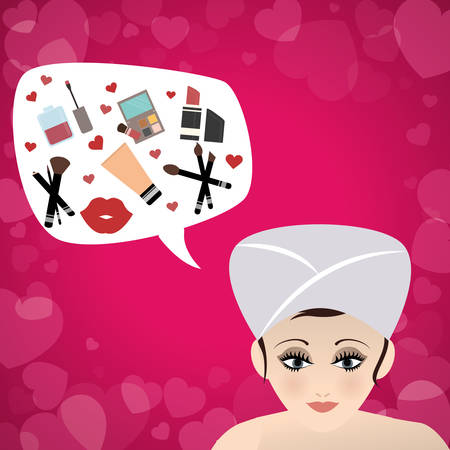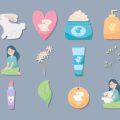Why Knowing Your Skin Type Matters
Understanding your skin type is the first big step toward taking care of your skin, especially for teens who are just starting to build their skincare routine. Think of it like knowing your shoe size before buying sneakers—if you get it wrong, things just won’t feel right! When you know whether your skin is oily, dry, combination, sensitive, or normal, you can pick products and habits that actually work for you. This helps prevent common issues like breakouts, redness, and irritation that many teens deal with. Plus, when your skin feels good, you feel more confident showing up at school, hanging out with friends, or even snapping selfies. Understanding your unique skin needs isn’t just about looking great—it’s about feeling comfortable in your own skin and learning how to take care of yourself as you grow.
2. The Five Main Skin Types: What’s Yours?
Knowing your skin type is the first step to building a solid skincare routine, and trust us, it’s not one-size-fits-all. Most dermatologists agree there are five main skin types: oily, dry, combination, normal, and sensitive. Let’s break down each type with real-life examples you might recognize from your own experiences or your friends at school.
Oily Skin
If your forehead shines by lunchtime and your phone screen gets greasy after a call, you probably have oily skin. Oily skin tends to produce excess sebum (oil), which can make you more prone to acne and blackheads—think about that friend who’s always carrying blotting papers in their backpack. This skin type often looks shiny, especially in the T-zone (forehead, nose, chin).
Dry Skin
Does your face feel tight after washing? Or do you notice flakiness around your cheeks during winter? Dry skin lacks moisture and can feel rough or look dull. You might find that makeup clings to patches or that your skin feels itchy after swimming in a pool.
Combination Skin
This is super common among American teens! Combination skin means some areas of your face (usually the T-zone) are oily, while other spots like your cheeks are dry or normal. Maybe you’re dealing with both breakouts on your forehead and flakiness around your mouth—yup, that’s combination skin!
Normal Skin
If you rarely break out, don’t get too shiny or too dry, and basically never think about your skin because it just “feels fine,” congrats—you have normal skin! This is the chill friend of all the skin types: balanced oil and moisture levels with minimal sensitivity or blemishes.
Sensitive Skin
Do you blush easily, get red or itchy when trying new products, or react to fragrances? Sensitive skin needs extra TLC because it’s more likely to get irritated by things like weather changes or certain ingredients in skincare products. Lots of teens with sensitive skin stick to fragrance-free or hypoallergenic products for a reason.
Quick Reference Table: Spot Your Skin Type
| Skin Type | Main Characteristics | Relatable Example |
|---|---|---|
| Oily | Shiny T-zone, frequent breakouts | Always reaching for blotting sheets between classes |
| Dry | Tightness, flakiness, dull appearance | Patches show up after gym class or cold days |
| Combination | Oily T-zone & dry/normal cheeks | Pimples on forehead but dry patches near mouth |
| Normal | No major issues; balanced skin | Barely needs moisturizer or acne treatments |
| Sensitive | Easily irritated, redness/itchiness common | Breaks out from trying new scented lotions |
The sooner you figure out which group you belong to, the easier it’ll be to pick products that actually work for you—and avoid those annoying breakouts or dry patches that can mess up your day!

3. How to Identify Your Skin Type at Home
Figuring out your skin type doesn’t require a trip to the dermatologist or expensive gadgets—teens can easily discover their unique skin type right at home using simple items and a bit of observation. Here’s how you can start:
The Bare-Faced Method
This is one of the easiest ways to check your skin type in the comfort of your own bathroom.
Step 1: Wash your face with a gentle cleanser, then gently pat it dry.
Step 2: Leave your skin bare—no moisturizer, toner, or products.
Step 3: Wait about an hour, letting your skin return to its natural state.
Step 4: Observe how your skin feels and looks. Is it shiny? Tight? Comfortable?
What to Look For
- Oily Skin: If your forehead, nose, and chin (the T-zone) look shiny or feel greasy all over.
- Dry Skin: If your face feels tight, rough, or flaky, especially on your cheeks.
- Combination Skin: If your T-zone is oily but your cheeks are normal or dry.
- Normal Skin: If your skin feels comfortable—not too oily or too dry—with minimal blemishes.
The Tissue Test
This quick test uses just a regular tissue from home.
Step 1: After waking up (before washing your face), gently press a tissue onto different areas: forehead, nose, cheeks, and chin.
Step 2: Check the tissue for oil spots.
Tissue Test Results
- If you see oil from all areas: likely oily skin.
- If there’s little to no oil: probably dry or normal skin.
- If only the T-zone shows oil: combination skin.
Pro Tip: Keep a Journal
Your skin can change with the seasons, stress, or hormones. Jot down what you observe after these tests for a week. This way, you’ll have a clearer picture and can adjust your skincare routine as needed!
4. Essential Skincare Routines for Every Skin Type
Figuring out your skin type is just the first step—now, let’s break down some easy and affordable skincare routines you can actually stick with! Whether your skin is oily, dry, combo, or sensitive, there’s a simple routine (and drugstore staple) that can help you look and feel your best. Here’s a quick guide to wallet-friendly products you can find at popular U.S. stores like Target, Walmart, or CVS.
| Skin Type | Morning Routine | Evening Routine | Budget-Friendly Product Examples |
|---|---|---|---|
| Oily | Foaming cleanser Oil-free moisturizer Lightweight sunscreen |
Gel cleanser Oil-absorbing toner Non-comedogenic moisturizer |
Cetaphil Daily Facial Cleanser Neutrogena Hydro Boost Water Gel CeraVe AM Facial Moisturizing Lotion SPF 30 |
| Dry | Creamy cleanser Hydrating serum Rich moisturizer SPF 30+ sunscreen |
Gentle cleansing milk Nourishing night cream Lip balm |
Dove Beauty Bar Sensitive Skin Eucerin Advanced Repair Cream Aveeno Protect + Hydrate Sunscreen SPF 60 |
| Combination | Mild gel cleanser Balancing toner Light moisturizer for T-zone SPF 30 sunscreen |
Micellar water Targeted spot treatment (if needed) Oil-free moisturizer for T-zone, richer cream for dry spots |
Burt’s Bees Micellar Cleansing Water Clean & Clear Essentials Dual Action Moisturizer Neutrogena Ultra Sheer Dry-Touch Sunscreen SPF 55 |
| Sensitive | Fragrance-free gentle cleanser Soothing moisturizer with ceramides Mineral sunscreen SPF 30+ |
Gentle makeup remover (if needed) Calming night moisturizer Avoid harsh exfoliants or actives |
CeraVe Hydrating Cleanser Vanicream Moisturizing Cream La Roche-Posay Anthelios Mineral Sunscreen SPF 50 |
Tips for Every Routine:
- Keep it simple: You don’t need a million steps—just cleanse, moisturize, and protect.
- Avoid harsh scrubs: Especially if you have sensitive or acne-prone skin.
- Listen to your skin: If something stings or irritates, swap it out!
- Don’t skip sunscreen: Even on cloudy days or if you’re indoors most of the day.
- Bargain hunt smart: Most products above are under $20 at major U.S. retailers.
Your routine doesn’t have to break the bank. The best skincare is what works for your unique skin—and what fits into your daily life!
5. Common Mistakes Teens Make (and How to Avoid Them)
It’s totally normal for teens to make a few skincare mistakes—after all, everyone’s still figuring things out! But some missteps can lead to more breakouts, irritation, or even damage your skin barrier. Here are some of the most common slip-ups and how you can dodge them for healthier, happier skin.
Over-Washing or Scrubbing Too Hard
Thinking “more is better” often leads to washing your face too frequently or using harsh scrubs. This actually strips away natural oils and can make oily skin even oilier or dry skin super flaky. Stick to washing your face twice a day with a gentle cleanser that matches your skin type. Skip the rough scrubs—instead, try a soft washcloth or just your fingertips.
Using Products Not Meant for Your Skin Type
It’s tempting to grab whatever is trending on TikTok or in the drugstore, but not all products work for everyone! Oily skin needs lightweight, oil-free moisturizers, while dry skin craves richer creams. If you’re not sure what works for you, check labels for words like “non-comedogenic” (won’t clog pores) or ask a dermatologist for recommendations.
Skipping Moisturizer Because of Acne
A lot of teens think moisturizing will make acne worse, but skipping it can actually backfire. When your skin feels dry, it produces more oil to compensate—which could mean more pimples. Even oily and acne-prone skin needs hydration! Look for gel-based or oil-free moisturizers designed for problem skin.
Popping Pimples
We get it—it’s tough to resist! But popping pimples can push bacteria deeper into your skin and cause scarring. Instead, spot-treat breakouts with an over-the-counter treatment containing benzoyl peroxide or salicylic acid. Be patient; most pimples clear up faster when left alone.
Forgetting Sunscreen
Sunscreen isn’t just for summer or sunny days—UV rays can damage your skin year-round. Skipping SPF increases your risk of premature aging, sunburns, and even skin cancer. Go for a broad-spectrum sunscreen with at least SPF 30 every morning as the final step in your routine.
Smart Swaps for Healthy Skin
If you catch yourself making any of these mistakes, don’t stress—just tweak your routine! Start simple: gentle cleansing, the right moisturizer, targeted treatments if needed, and daily sunscreen. With consistency (and a little patience), you’ll help your unique skin look and feel its best every day.
6. When to Ask for Help: Seeing a Dermatologist
Sometimes, even after trying different skincare routines and products, you might notice that your skin just isn’t getting any better—or maybe it’s getting worse. Knowing when to seek professional help is super important for maintaining healthy skin and your overall confidence.
Signs It’s Time to See a Dermatologist
- Persistent Acne: If you’ve tried over-the-counter products for a few months and your breakouts won’t quit, it’s probably time to see an expert.
- Severe Redness or Swelling: If your skin is often red, swollen, or painful, don’t ignore it—these can be signs of more serious issues like eczema or rosacea.
- Unusual Spots or Changes: New moles, dark spots, or patches that change shape, size, or color should always be checked out.
- Itching That Won’t Go Away: Chronic itchiness might be a sign of allergies or other skin conditions that need special treatment.
Busting the Stigma: It’s Okay to Get Help
Let’s be real—going to a dermatologist doesn’t mean something is “wrong” with you. Skin is the body’s biggest organ, and just like seeing a doctor for a cold or braces for your teeth, getting help for your skin is totally normal. In fact, dermatologists are there to make sure you get the right care and feel comfortable in your own skin. There’s nothing embarrassing about asking questions or wanting to feel better!
Your Skin Journey Is Unique
No two people have exactly the same skin needs. If you’re dealing with stubborn breakouts, irritation, or anything else that makes you uncomfortable, a dermatologist can help you figure out what’s really going on and create a plan that fits your life. Remember, taking care of your skin is self-care—and seeking help when you need it is a smart move!


